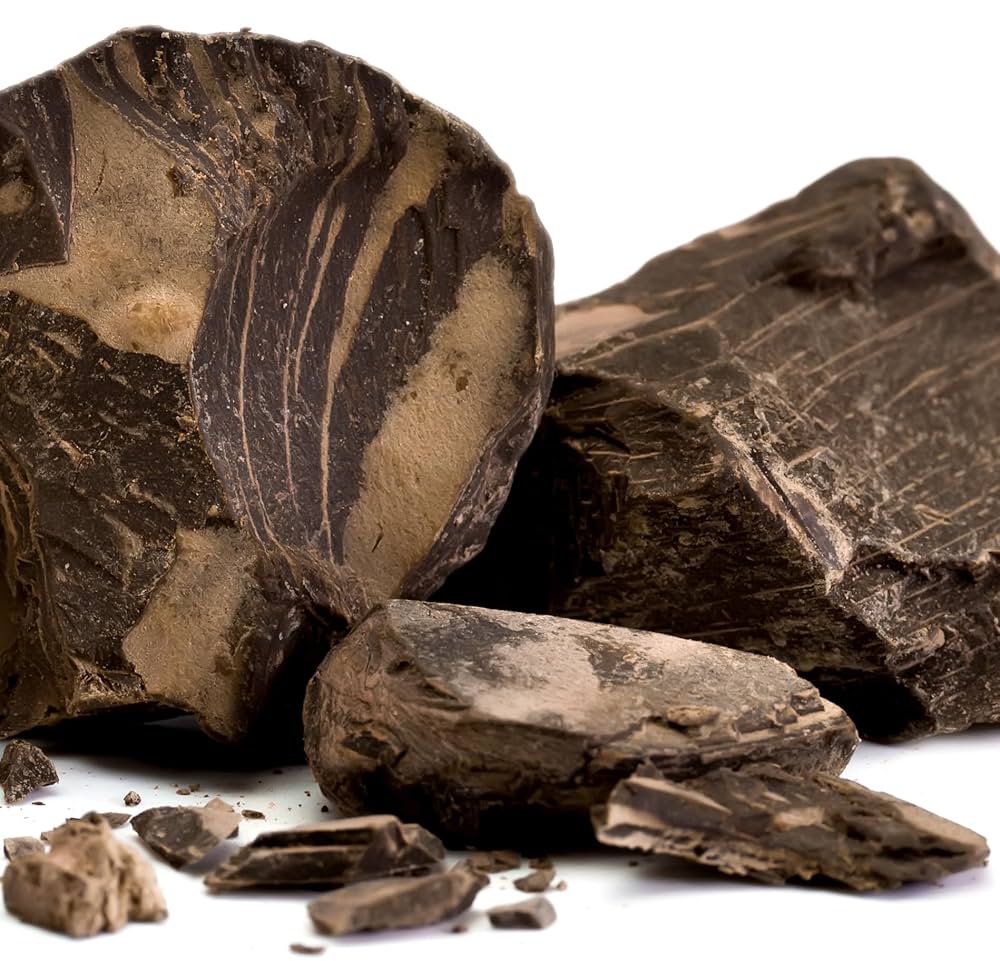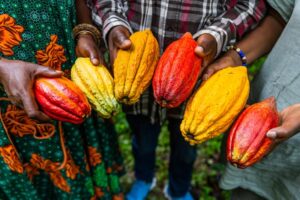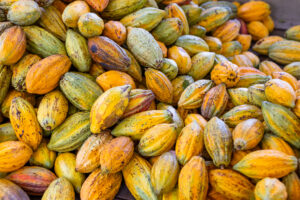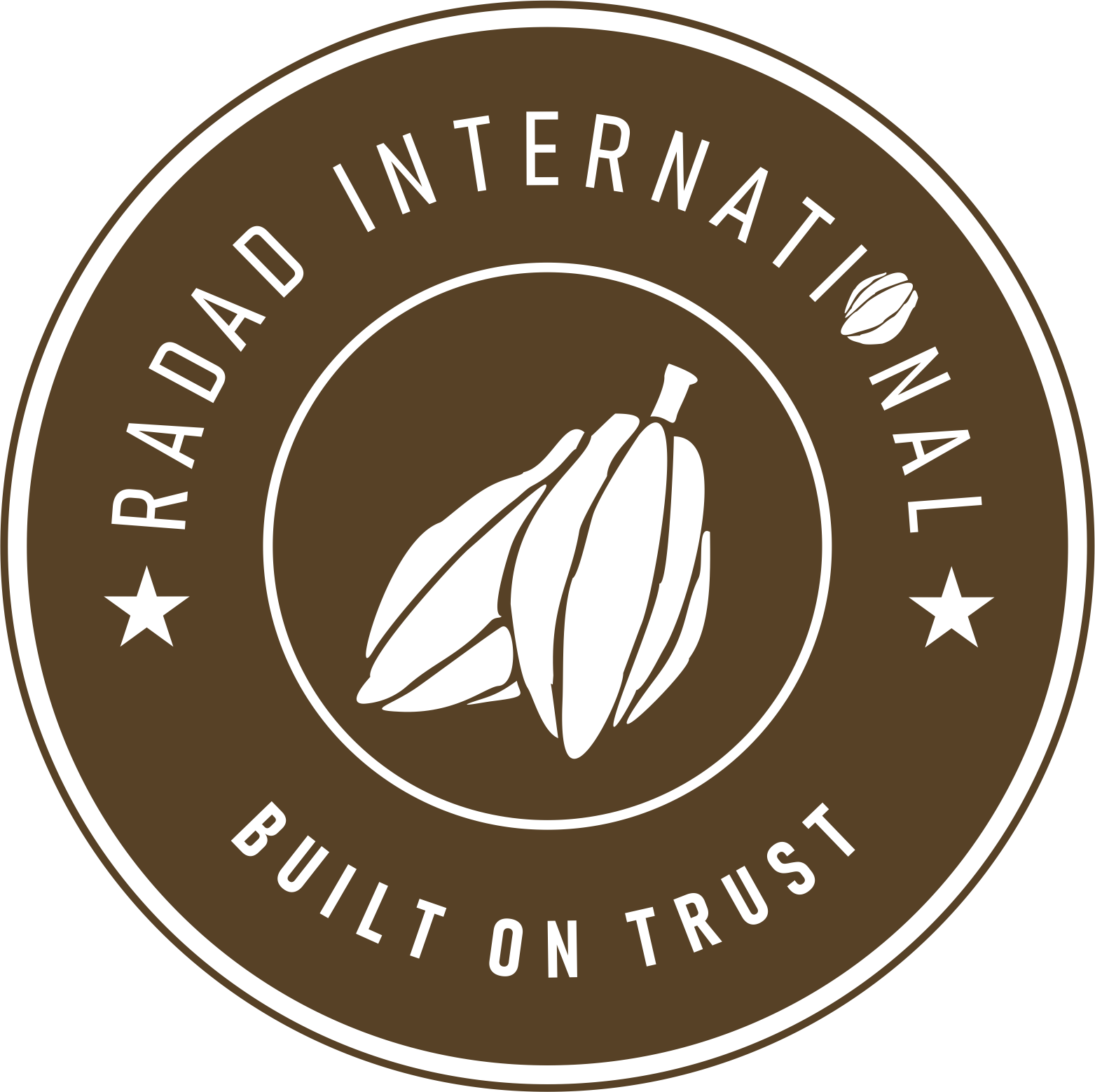Cocoa mass, often called cocoa liquor, is the unsweetened, pure form of chocolate. It’s what gives chocolate its intense flavor and rich aroma. Made by grinding roasted cocoa nibs into a smooth, thick paste, cocoa mass is the essential foundation for nearly every chocolate product on the market — from dark chocolate bars to chocolate beverages and bakery ingredients.
Across the globe, manufacturers and chocolatiers place a premium on high-quality cocoa mass, especially African cocoa mass, known for its strong, bold flavor profiles and high butter content. In particular, cocoa mass from Ghana and other West African countries is in high demand due to its consistent quality, deep flavor notes, and excellent processing standards.
Whether you’re sourcing raw ingredients, formulating recipes, or just want to understand why African-origin cocoa mass is so highly sought after, this guide offers a full view of what makes it such an essential ingredient in the food industry.
Key Properties and Specifications of Cocoa Mass
- Composition & Texture
Cocoa mass is typically composed of:
- Cocoa solids (the non-fat part that holds the flavor and antioxidants)
- Cocoa butter (the fat content that gives it a smooth, creamy texture)
Most high-quality cocoa mass contains about 50%–55% cocoa butter, although this varies slightly depending on the origin and processing method. The resulting product is thick, rich, and pliable at warm temperatures.
- Color
The color of cocoa mass ranges from deep reddish-brown to dark chocolate brown, depending on the bean type, roast level, and fermentation. Cocoa mass from West Africa, particularly Ghana, is known for its vibrant, deep color — a sign of its robust fermentation process.
- Flavor Profile
Cocoa mass offers a naturally bitter and intense chocolate flavor with earthy, nutty, and slightly fruity undertones. West African cocoa mass tends to be bold, well-balanced, and slightly acidic, making it a favorite for dark chocolate and industrial applications that require rich flavor.
- pH Levels
Most cocoa mass falls in the natural pH range of 5.2–6.0, although alkalized variants are available upon request for specific industrial uses (mainly in beverages and processed chocolate products).
- Packaging and Storage
Cocoa mass is usually delivered in:
- Block or slab form (pressed and wrapped)
- Melted and packed in containers for industrial use
Proper storage is key — it should be kept in a cool, dry place, ideally below 25°C (68°F), to preserve its integrity, texture, and flavor.
Nutritional Content of Cocoa Mass
- Rich in Antioxidants
Cocoa mass is one of the highest sources of flavonoids, particularly epicatechin and catechin, which are powerful antioxidants. These compounds help reduce oxidative stress, support cardiovascular health, and even contribute to improved brain function.
- High in Healthy Fats
Thanks to its natural cocoa butter content, cocoa mass contains a balanced mix of:
- Oleic acid (a heart-healthy monounsaturated fat)
- Stearic acid and palmitic acid (saturated fats that don’t raise cholesterol the same way other saturated fats do)
These fats also make cocoa mass excellent for skin-care applications and functional food products.
- Dietary Minerals
Cocoa mass is a potent source of essential minerals like:
- Magnesium – for muscle and nerve function
- Iron – crucial for red blood cell production
- Zinc – for immunity and cell repair
- Potassium and phosphorus – supporting heart health and bone strength
A small serving can contribute meaningfully to daily mineral intake.
- Plant-Based Protein & Fiber
It contains small but valuable amounts of protein and dietary fiber, making it beneficial for digestive health and muscle maintenance. For plant-based diets, cocoa mass from Ghana can serve as a flavorful addition to protein-rich snacks and beverages.
- Naturally Low in Sugar
Pure cocoa mass contains no added sugar, making it ideal for keto, diabetic-friendly, or low-carb products. This gives manufacturers the flexibility to sweeten as needed or keep it bitter and rich.
Uses of Cocoa Mass Across Industries
Cocoa mass, also known as cocoa liquor and sometimes chocolate mass, is far more than a raw material for chocolate. Its versatility, rich flavor profile, and nutrient density make it a valuable ingredient across various industries. Whether you’re sourcing cocoa mass from Ghana, West Africa, or elsewhere, it has applications that go well beyond traditional confectionery.
- Chocolate & Confectionery
This is the most well-known use — cocoa mass is the heart of all real chocolate products. Whether it’s dark, milk, or semi-sweet, the journey begins with cocoa mass. Its high cocoa solids content gives chocolates their rich, bold flavor. It’s used in:
- Chocolate bars
- Truffles
- Baking chocolate
- Chocolate coatings and spreads
Many high-end chocolatiers insist on African cocoa mass because of its distinctive taste and aroma, especially from regions like Ghana and Ivory Coast.
- Beverages
Cocoa mass is used in the production of premium drinking chocolate and hot cocoa mixes. It adds depth, body, and a natural thickness to the drink. Unlike processed cocoa powder, using cocoa mass gives a more intense and authentic chocolate experience.
- Health & Wellness Products
With growing awareness of functional foods, cocoa mass from West Africa is now making its way into:
- Superfood bars
- Nutritional supplements
- Keto and vegan snacks
- Mood-enhancing drinks
Its antioxidant and flavonoid content makes it a natural ingredient for products targeting cognitive and cardiovascular health.
- Personal Care & Cosmetics
Yes — cocoa mass isn’t just for eating. The high cocoa butter content makes it useful in the cosmetics industry, particularly for:
- Lip balms
- Body butters
- Lotions
- Soaps
It helps moisturize, soften, and nourish the skin — a reason why ethically sourced cocoa mass from Ghana is sought after by clean beauty brands.
- Artisan Baking & Pastry
Bakers love cocoa mass for its smooth meltability and robust cocoa flavor. It’s often used in:
- Ganache
- Glazes
- Mousse
- Fudge
Because it doesn’t contain sugar, chefs have full control over the final taste and sweetness of their creations.
Specifications & Quality Standards of Cocoa Mass
When sourcing African cocoa mass — especially from trusted regions like Ghana or Ivory Coast — understanding the specifications is crucial. Buyers, whether for food production, cosmetics, or health products, demand consistent quality. Here’s what defines top-grade cocoa mass:
- Physical Characteristics
- Appearance: Solid block or liquid (when melted), dark brown in color.
- Texture: Smooth and homogenous when melted, with no grittiness or separation.
- Aroma: Deep, rich cocoa aroma with earthy undertones — a hallmark of West African cocoa mass.
- Chemical Composition
- Fat content: Typically between 50%–55% cocoa butter.
- Moisture content: Below 1.5% for long shelf life and microbial safety.
- pH level: Natural cocoa mass has a pH between 5.2–5.8. Alkalized versions (less common) are higher.
- No added sugar or additives: 100% pure cocoa.
- Microbiological Standards
High-quality cocoa mass from Ghana is expected to meet strict food safety criteria:
- Free from Salmonella, E. coli, and other pathogens.
- Low total plate count and mold levels.
- Produced under certified GMP or HACCP processes.
- Heavy Metals & Contaminants
Reputable suppliers — especially those exporting monthly bulk cocoa mass from West Africa — provide lab reports showing compliance with international limits on:
- Cadmium
- Lead
- Pesticide residues
- Certifications
Look out for these labels when buying or exporting cocoa mass:
- Organic (certified by USDA, EU, etc.)
- Fairtrade
- Rainforest Alliance
- UTZ Certified
These not only ensure ethical sourcing but also appeal to conscious consumers, especially in the European and North American markets.
Sourcing Cocoa Mass from Africa
Africa remains the backbone of the global cocoa supply, and when it comes to premium cocoa mass, no region stands taller than West Africa — especially Ghana and Ivory Coast. These countries produce some of the world’s richest, most flavorful cocoa beans, and that excellence directly translates into the quality of the cocoa mass.
If you’re in the food, confectionery, cosmetics, or nutraceutical business, sourcing matters. Consistency, traceability, and purity are key. That’s why many businesses are turning to trusted suppliers like Radad International.
Radad International – Bulk Cocoa Mass You Can Trust
At Radad International, we specialize in supplying bulk African cocoa mass to partners around the world. Whether you need regular monthly volumes or larger shipments for seasonal production spikes, we’ve got you covered.
- Origin: Our cocoa mass is primarily sourced from Ghana, Ivory Coast, Cameroon, Sierra Leone, and other West African regions — renowned for producing beans with a rich cocoa flavor and excellent fat content.
- Quality Guarantee: We work with certified processing facilities and adhere to global food safety and quality standards.
- Direct Supply: We make it easy for buyers to get monthly cocoa mass from West Africa with direct-from-source logistics — no middlemen, no surprises.
- Bulk Supply: Whether you need 1 MT or 100 MT, we scale to meet demand — from artisanal producers to large-scale manufacturers.
- Global Reach: Our offices in Nigeria and Dubai give us an edge in both sourcing and delivering across continents efficiently.
When you partner with Radad International, you’re not just buying cocoa mass — you’re securing reliability, ethical sourcing, and premium-grade cocoa that enhances the quality of your products.







